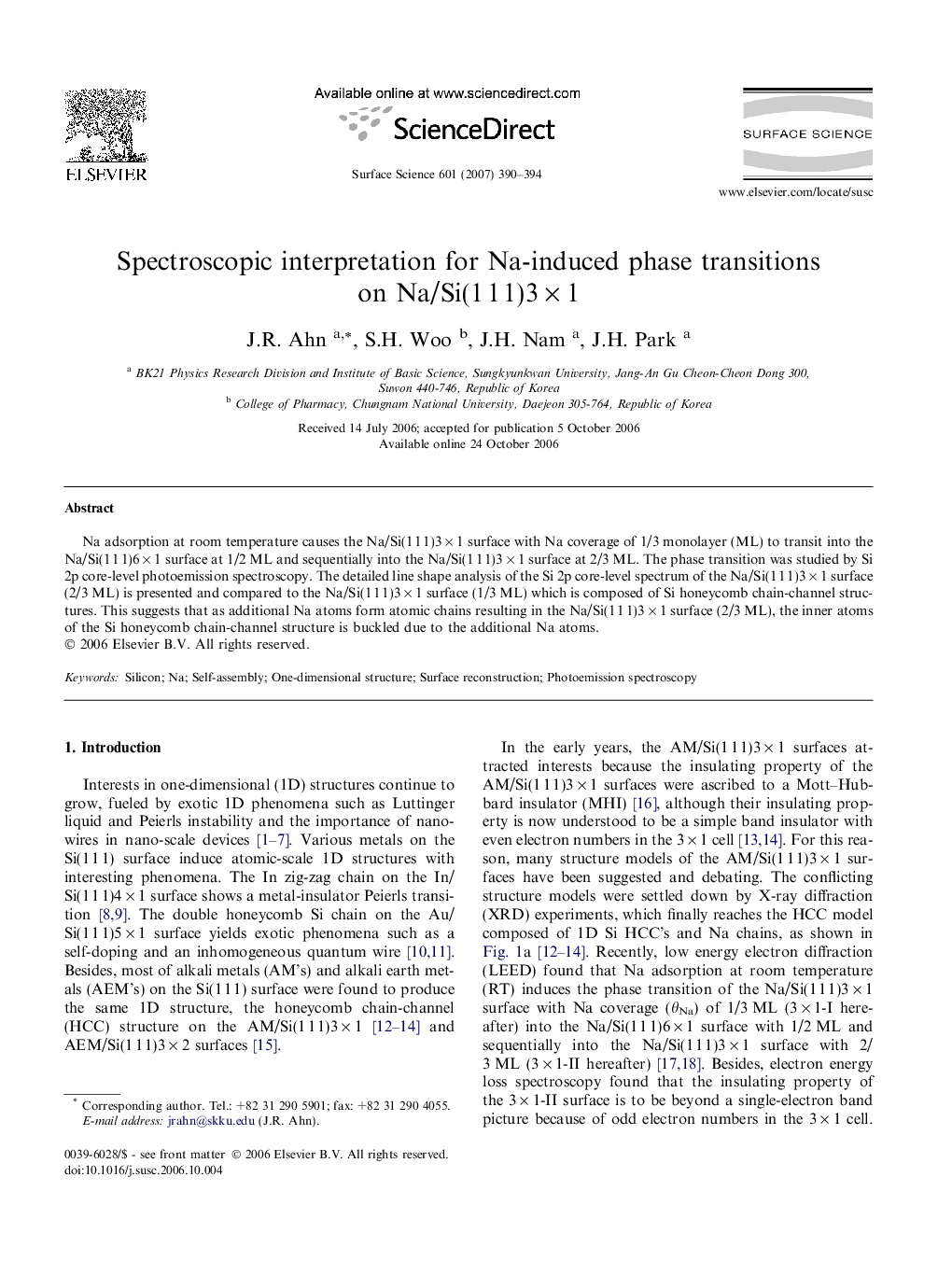| Article ID | Journal | Published Year | Pages | File Type |
|---|---|---|---|---|
| 5426148 | Surface Science | 2007 | 5 Pages |
Na adsorption at room temperature causes the Na/Si(1Â 1Â 1)3Â ÃÂ 1 surface with Na coverage of 1/3 monolayer (ML) to transit into the Na/Si(1Â 1Â 1)6Â ÃÂ 1 surface at 1/2Â ML and sequentially into the Na/Si(1Â 1Â 1)3Â ÃÂ 1 surface at 2/3Â ML. The phase transition was studied by Si 2p core-level photoemission spectroscopy. The detailed line shape analysis of the Si 2p core-level spectrum of the Na/Si(1Â 1Â 1)3Â ÃÂ 1 surface (2/3Â ML) is presented and compared to the Na/Si(1Â 1Â 1)3Â ÃÂ 1 surface (1/3Â ML) which is composed of Si honeycomb chain-channel structures. This suggests that as additional Na atoms form atomic chains resulting in the Na/Si(1Â 1Â 1)3Â ÃÂ 1 surface (2/3Â ML), the inner atoms of the Si honeycomb chain-channel structure is buckled due to the additional Na atoms.
